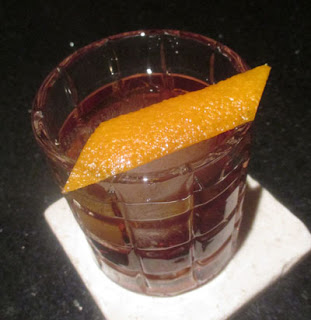First published on the USBG National blog in September 2017, and slightly modified for publication here.
One of the most crucial parts of preparing oneself for a bar shift is just showing up, and perhaps that should be amended to showing up healthy, energized, and ready to work. The next is setting up the bar with all of the hauling of ice and juicing of citrus that it entails. But what else besides the basics can one do to improve one’s readiness to do the job even before stepping through the door?
First, spend a bit of time every day before the shift reading.
While reading up on cocktail recipes, garnish tips, and new beers is an amazing way to improve one’s understanding of the craft, it does not help to connect to all of our guests. So think of ways to diversify such as reading up on new movies, plays, and events around town. In fact, I have made great connections with guests by discussing new movies and then soliciting suggestions from them. If I did go see that recommended movie, checking back in at their next visit with a report on their suggestion is an amazing way to connect. This can also be expanded beyond movies to concerts,
YouTube clips, and book suggestions as well.
What about with sports fans?
One of my bars had a large TV right beside the bar, so it helped to be up on a lot of sporting knowledge. While I could not dedicate the hours to watch games, I made sure to read the front page of
ESPN each morning and figure out where the home teams were playing (and against whom) that day. It also helped to watch clips of the top plays of the previous day which took only two or three minutes; for example, when a guest asked if I saw a game, I could reply that I only caught the highlights and how that catch was amazing.
Investing in hobbies is another way to prepare for the shift.
For example, I have been vegetable gardening in the same plot of land for the last 16 summers. The number of guests that I have connected with about gardening through the years has been grand. Guests will come in for updates, commiseration or celebration about certain crops, and sharing of tips throughout the warmer months. It also helped at some of my bars that I brought in mint and edible flowers for garnish from my garden to tie the conversation in with the bar program.
 Actually, going out can be a great way to do research for one’s guests.
Actually, going out can be a great way to do research for one’s guests.
I often ask people where they have been drinking or eating lately, and I frequently make suggestions on where to go including where to go after leaving my bar. I feel that it can build trust when one tells their patrons to go elsewhere. Moreover, for my guests who travel a lot for work, I inquire what cities are they going to next, and I set them up with bar recommendations of places that I have heard of or preferably know people at. Even with guests who are considering leaving your establishment, providing ideas for their night’s next destination is great hospitality; messaging your friend to expect them and informing their crew what your guests like to drink are some higher order actions.
Definitely there are some topics that are worth staying on top of but not discussing in depth with guests, such as politics and religion. I have violated that when it is a regular whose views I already know, and the bar is otherwise empty or sparse, so there is less risk of offending anyone. For those guests, it seems to be cathartic to express their anxieties about the state of affairs. But tread with caution here and try to insert one’s own opinion less.
Finally, I like to study my bartender moleskin.
Sometimes it is to enter new recipes in the front section of the book, or remind myself of forgotten recipes. But the magic has always been in the back. When I meet a new guest that seems noteworthy, I will enter their name with a fact or two and perhaps a brief description of their looks. Guests that come in more than that one time get an asterisk for easier referencing. Indeed, it has come in useful when people return months later and I need to research their name or what we spoke of last, and managers have actually requested that I check my records about guest’s identities for their nightly reports or to greet them in the dining room.
Being prepared for the shift to the employer starts with physically being there and being (or pretending to be) in a good mood. But for the bartender, it ought to start well before one’s call time to figure out ways to connect with guests and make their experience outside of the food and drink realm all the more positive and memorable.


































 The 2017 collection of 855 drink recipes, bartender tributes, and essays on hospitality from CocktailVirgin's Frederic Yarm. Available at
The 2017 collection of 855 drink recipes, bartender tributes, and essays on hospitality from CocktailVirgin's Frederic Yarm. Available at  The 2012 collection of 505 drink recipes, techniques, and Boston bar recommendations from Frederic Yarm. Available at
The 2012 collection of 505 drink recipes, techniques, and Boston bar recommendations from Frederic Yarm. Available at 




